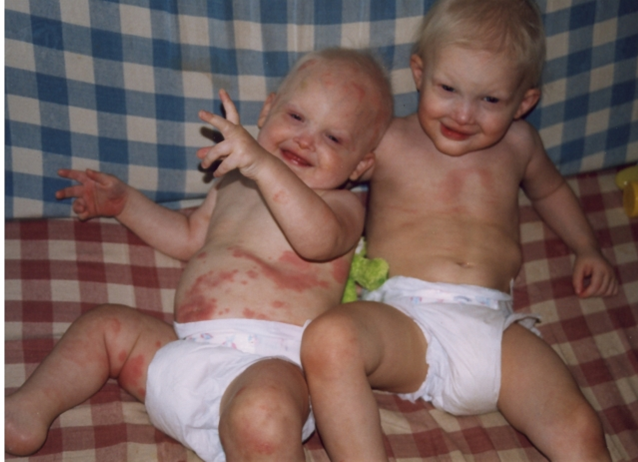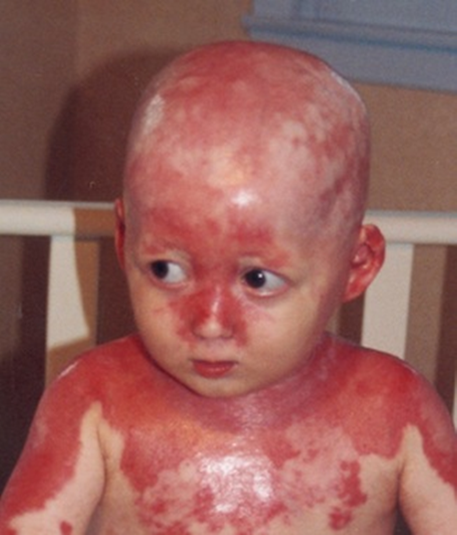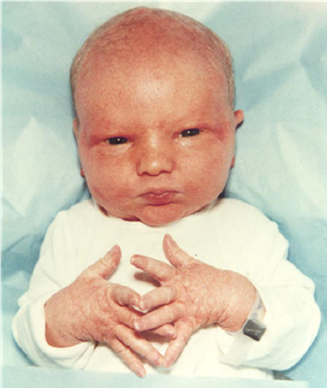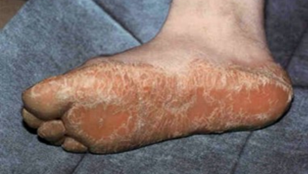Skin
The skin may be pale and transparent with veins visible and there is often increased pigmentation around the eyes or on the elbows, palms, and soles of the feet.
During the summer months a high factor sun block should be used at all times, preferably one for sensitive skin. However, a heavy sun cream may make the individual hot, so a lighter cream may be more suitable.
Cotton clothes next to the skin and cotton bedding are advisable.
In the Ectodermal Syndrome known as Hay-Wells (AEC), the skin is more severely affected, such that infants may present with chronic wounds complicated by life-threatening infections requiring the care of a Doctor to relieve discomfort, prevent secondary infection, and minimise scarring.
Many families in this situation have tried various products but have found that persisting with saltwater bathing is the best treatment.
Skin Infections and Erosions
Most individuals with ectodermal dysplasia do not experience frequent skin infections. However, those with AEC syndrome (Ankyloblepharon-Ectodermal Defects-Cleft Lip/Palate) or EEC syndrome (Ectrodactyly-Ectodermal Dysplasia-Clefting) may be more prone to skin problems—especially on the scalp, hands, and feet.
In these conditions, the skin may become red, swollen, weepy, or crusty, which can lead to painful erosions and increase the risk of infection. If not managed properly, these skin issues can cause more serious complications.






